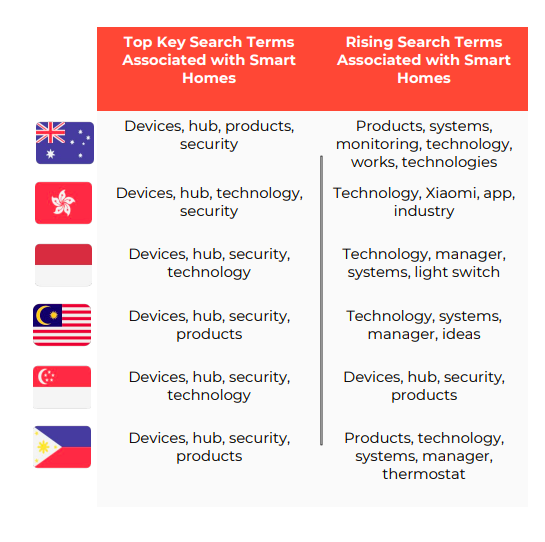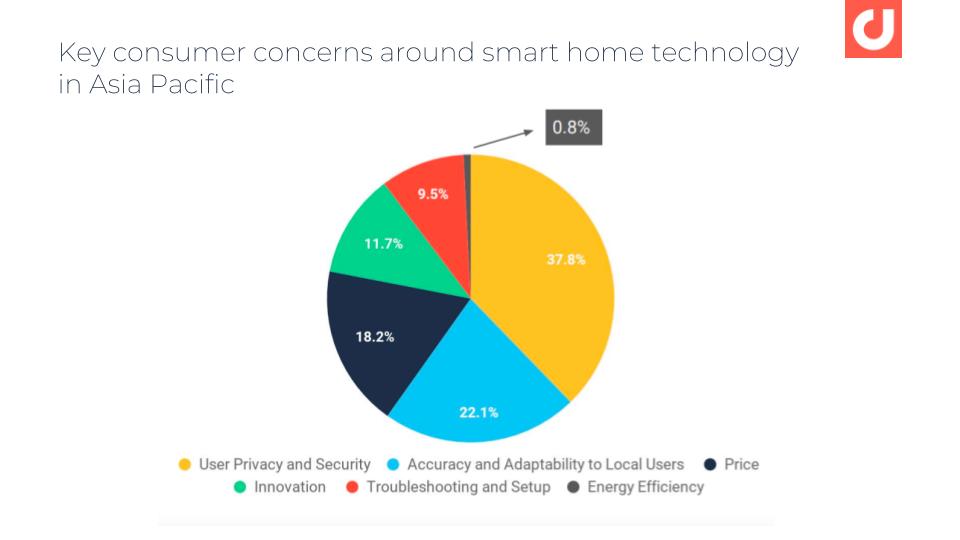Top 3 Consumer Demands for Smart Homes in Asia Pacific on Social Media
The use of smart homes is snowballing in Asia Pacific. The market is expected to account for 25% of this industry, which will reach a whopping $400 billion worldwide in 2030.
Indeed, smart home devices like voice activated speakers have evolved from a science fiction trope, to the hottest development in consumer electronics. With discussions about Amazon Echo and Google Home soaring around the festive period, it’s clear that smart homes are on many wishlists.
But how can international brands like Google, Amazon, Apple, Lenovo, and others increase the adoption of smart home technology in Asia Pacific? What features and updates should product teams prioritize to make smart home devices more appealing and in turn, a common fixture in households?
Discussions on social media and online reviews are rich in insights about what consumers want or expect from their favorite brands, especially relating to product features. According to a report by Digimind, which analyzed key discussion trends around smart home devices in Asia Pacific, top consumer demands on social media include:
- Availability of compatible products
- Adaptation of voice activated features to local users
- Protection of user privacy
1. Availability of Compatible Products
Smart home consumers in Asia Pacific are looking for an all-rounded system with good sound quality that can integrate products across multiple brands. For example, a lighting and security system that can be activated by Amazon Echo.
In fact, 25.4% of consumers consider product integration an important factor when selecting a smart home device, a sentiment echoed by search trends on Digimind Social’s top reputation module.
 Key search trends around smart homes in Asia Pacific
Key search trends around smart homes in Asia Pacific
“Devices” and “hubs” are the top search terms associated with smart homes across Asia Pacific. The search terms “smart home devices that work with Alexa” and “smart home using Alexa” also trended in Singapore, Australia, and The Philippines.
Creating an ecosystem of compatible devices will be essential to driving sales for smart home devices. Conversely, compatibility with leading voice assistants (VAs), Amazon Alexa and Google Assistant, will also be a key selling point for future smart consumer electronics. Common searches in APAC showed users were looking for products compatible with their preferred VA. Therefore companies offering Google Assistant or Amazon Alexa enabled devices could increase chances of getting discovered, by including phrases like “works with Alexa” or “Google Assistant compatible” on their product pages.
Pro tip: Monitor trends around questions asked by consumers around your brand and competitors to identify which brands in vertical or horizontal industries to partner with to capture this growing market. Check out more tips to boost product development with social media intelligence.
2. Adaptation of Voice Activated Features to Local Users
Ever asked Siri or Alexa to do something for you, only to have them tell you they don’t understand? As most, if not all consumers use a voice assistant to control smart devices, accuracy can make or break a user experience.
Data analyzed in Digimind’s report showed that inaccuracy of smart speakers in understanding voice commands is a key cause of dissatisfaction, and even frustration, in Asia Pacific. Key customer complaints about smart home devices lack of understanding include:
- Google Home’s inability to discern between users’ voice commands, and advertisements or videos that contained the phrase “Hey Google”, a command used to activate the device.
- The inability of virtual assistants to recognize voice commands in local English accents.
The addition of British and Australian accents to Google Assistant was well received by consumers. Apart from optimizing user experiences, it is important for smart home brands, especially international players, to stay one step ahead in tailoring their products and voice-controlled functions to local needs and trends.
Pro tip: By monitoring key trends in customer complaints and feedback in each geographical market, product teams can identify specific areas of voice recognition technology to refine and develop.
With voice activation displaying limitations in processing local accents, this could mean an advantage for smart displays as a visual centric alternative for smart speakers in Asia Pacific and beyond.
3. Protection of User Privacy
Perhaps the most pressing consumer demand raised on social media is for smart home brands to prioritize user privacy.
 Key consumer concerns around smart homes in Asia Pacific.
Key consumer concerns around smart homes in Asia Pacific.
Internauts in Asia Pacific are paying close heed to news about voice recordings compromising users in countries outside the region. Moreover, they are also citing potential loss of privacy as a reason to not adopt smart home technology.
Consumers have grown more and more skeptical about technology companies with regards to user privacy and security. According to data from Digimind Historical Search, the ‘Delete Facebook’ movement came strong in March 2018, with over 500,000 mentions internationally, following the Cambridge Analytica scandal. Internauts in Australia and Hong Kong were also strongly vocal about their concerns over Facebook’s data breach in April 2018.
These negative associations can be detrimental to a brand’s online reputation and in turn, sales. Brands must be weary, and ensure their products do not become synonymous with privacy risks, by:
- Developing with a data privacy first mindset
- Adopting transparency in their communications with consumers to build trust
In Summary
As Asia Pacific shapes up to be a key market for smart home technology, brands must be strategic in scaling adoption and use. With consumers sharing their experiences using smart home technologies on social media, as well as seeking opinions about vendors and products available in their market, the Internet can be rich in insights for product development and communications strategies.
Download your free report to discover more insights on the smart homes movement and its impact on the consumer electronics industry.
Written by Melissa Chue
Melissa is a digital advocate who loves diving into the latest trends in digital and social media. Since joining Digimind’s marketing team in 2015, she has written studies for over 15 industries in Asia Pacific. When she is not telling stories about data, Melissa can be found exploring her favourite cafes and hangouts on Instagram @chuepachups.
